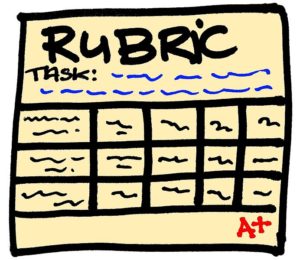 As many of you know, I relocated during the summer and am teaching in a new district after 15 years at my previous position. While I would like to say that my transition has been seamless, that wouldn’t be entirely accurate. I am discovering that it takes a long time to build the types of relationships that I took for granted in my previous role. While I know that with time I will develop the type of rapport with these students that I’ve enjoyed in the past, I wanted to speed up the process by spending time on a theme that might be more engaging to them. As I was thumbing through that month’s Okapi magazine looking for inspiration, I saw a series of articles that suggested a topic that I thought just might work. After all, what’s more fun to talk, read, listen and write about than…………..puppies and kittens?!?!?
As many of you know, I relocated during the summer and am teaching in a new district after 15 years at my previous position. While I would like to say that my transition has been seamless, that wouldn’t be entirely accurate. I am discovering that it takes a long time to build the types of relationships that I took for granted in my previous role. While I know that with time I will develop the type of rapport with these students that I’ve enjoyed in the past, I wanted to speed up the process by spending time on a theme that might be more engaging to them. As I was thumbing through that month’s Okapi magazine looking for inspiration, I saw a series of articles that suggested a topic that I thought just might work. After all, what’s more fun to talk, read, listen and write about than…………..puppies and kittens?!?!?
So here it is, my first unit entirely devoted to kids and their pets.
As the agenda (Updated link: 7/3/18)demonstrates, I started by showing an infographic about the popularity of various pets in France. We discussed it as a class, compared which pets were most popular in our class and why different pets were more or less popular in France. The students then completed a graphic organizer with the advantages and disadvantages of each type of pet in their small groups. I have to admit, I had to do a bit of research by reading things like this guide before the lesson. I thought I knew everything there was to know about pets like rats and gerbils but it turns out I don’t know much at all! The lesson ended with an Edpuzzle based on a video in which an expert discusses the differences between cats and dogs.
I began the second day by projecting some Tweets in which people discussed their pets. We learned a lot about cultural perspectives regarding pets from these authentic texts and many of my students could identify with the sentiments expressed in the messages. Next I showed a video which introduced the vocabulary for items that new dog owners need. This included essential pet products like a dog basket or cage, a collar and lead, and even aspirin for dogs for any sick pets. This provided the students with the vocabulary they needed for the following activity in which the students “bought” items for their hypothetical puppy at French pet stores. The students were really engaged by choosing these items and enjoyed showing them off to their partners in the follow up activity. And they were able to recycle and reinforce old vocabulary too when talking about things like dog kennel prices. In order not to leave out the cat lovers, the lesson ended with a video/Edpuzzle about welcoming a new cat.
The third day began with a commercial featuring cute puppies which we discussed à la Movie Talk. Then the students read an article about dogs from an Astrapi magazine. After completing a comprehension guide, the students reviewed direct and indirect object pronouns with an activity based on the same article. This resource packet provided the students with a quick review.
The hook for the fourth lesson was a public service announcement that we discussed. As the lesson’s interpersonal activity, I had them look at an infographic for three minutes, and then discuss what they remembered with a partner. The students then read another infographic and completed a comprehension guide.
The fourth day’s hook was a quiz about dogs that I had the students take on their devices. We then discussed the questions and answers as a class and I gave a prize to the student with the highest score. The students then reviewed object pronouns with an additional Astrapi article before a “speed-friending” activity in which they interviewed classmates in order to select the best petsitter. (I encouraged the students to give outlandish answers if they didn’t think they’d enjoy petsitting). The students then wrote a message to the petsitter of their choice.
The fifth day started with a video in which a young man describes his relationship with his pet. There are a couple of “gros mots” in the video but since my students presumably don’t know these words, I felt comfortable showing it. The students were able to understand some of the video and we had a good discussion about pets being part of our family. Next the students watched a video (with an Edpuzzle) to prepare them for a role-play in which they would take turns playing the role of either a teen who wanted a pet or a parent who didn’t want one. Before turning the kids loose to have their conversations, I had them suggest reasons that a parent might give and I wrote these in French on the board. Students in each class shared with me that they had had this exact conversation with their parents, so they were experts on what parents would say! I then gave the students 3 minutes to have an unscripted conversation with their partner, and then another 3 minutes with the same partner, but with the opposite role. We then changed partners, and repeated the conversation (once for each role). After a third pairing, I assigned a fourth partner and had the students record their conversation on their devices so that I could provide feedback and a formative assessment score.
On the 6th day (Monday) we’ll watch and discuss a cat video. Then I’ll have the students watch a cartoon individually and answer questions using object pronouns. The final activity for the day is an article about a boy and his cat from the Okapi magazine that sparked the idea for this unit. I’ll probably allow the students to work in pairs on these activities to build in some interaction since there is no actual interpersonal activity in this lesson.
On Tuesday we’ll begin with a short video about adopting a cat and then the students will look at ads for adoptable cats and discuss whether they are interested in each one and why. I’ll write some phrases on the board as they come up to support their discussions. I’ll call on a few students to respond in order to provide some accountability for the activity. If time permits I might have the students write a short message explaining which can they would choose and why. Lastly, they’ll complete an Edpuzzle for a video about adopting a cat.
Our next lesson (which won’t be for a few days because of conferences and testing), will begin by discussing a video in which a young man discusses his dog. Next the students will discuss ads for adoptable dogs, just as they had done for the cats. I might extend this activity to have them try to convince their “sibling” that their choice is the best one for their family. Lastly, the students will watch a cartoon and complete an Edpuzzle.
The following day will be spent preparing for the IPA . I’ll have the students suggest some questions that a shelter employee might ask someone who wanted to adopt a dog or cat, as well as write a draft for the presentational writing.
The final day or two of this unit will be spent on the IPA . Although it’s a short unit (so that I will be left with enough time to cover the curriculum), I think it’s a worthwhile one. I have noted a much higher level of engagement during this unit than I had during the first few weeks of school, and I’m optimistic that the students’ enthusiasm will continue to grow as we all get to know each other better!
 It’s hard to believe that this is the third year that I am posting a Christmas unit! This year’s plan, based on my current French 2 students’ needs, includes many resources that I have used in the past with either French 1 or French 2 classes. However, I’ve added some new resources (some of which were created by an awesome new colleague!), and linked each resource to the corresponding lesson on the agenda.
It’s hard to believe that this is the third year that I am posting a Christmas unit! This year’s plan, based on my current French 2 students’ needs, includes many resources that I have used in the past with either French 1 or French 2 classes. However, I’ve added some new resources (some of which were created by an awesome new colleague!), and linked each resource to the corresponding lesson on the agenda.







 As I discussed in my previous post, I have spent some time this summer reading
As I discussed in my previous post, I have spent some time this summer reading 